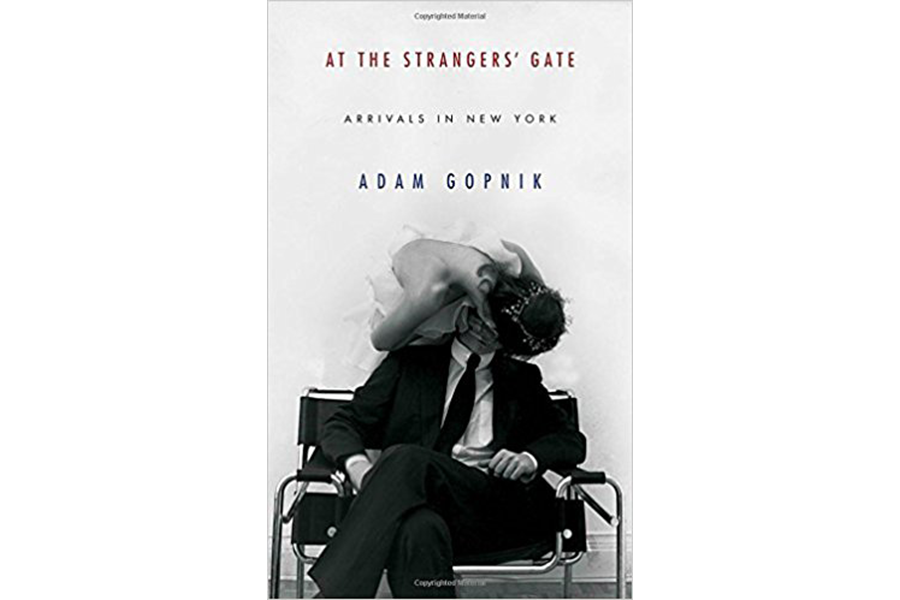'At the Strangers' Gate' is Adam Gopnik's captivating story of a couple finding their way in the Big Apple
Loading...
Adam Gopnik, popular New Yorker writer and author of the bestselling memoir "Paris to the Moon," came to New York from Canada with his then-girlfriend, soon-to-be wife Martha in 1980 to seek a new life and new adventures, and now, after nearly 40 years (what he calls “the natural gestation time of nostalgia”), he takes up that new-arrival narrative in his latest book, At the Strangers' Gate, a well-oiled and smoothly captivating performance from start to finish, sure to be as beloved as "Paris to the Moon" but feeling even more personal and involving.
It tells the story of a young couple happily in love and trying to find their way in a Big Apple then at the height of its modern incarnation as the capital of self-centered greed. Both "Paris to the Moon" and "At the Strangers' Gate" are stories of outsiders encountering the eccentricities of a strange new world, but they're in very different registers; if the earlier book is Gopnik's "Innocents Abroad," this new one is his "Roughing It."
It's a memoir that contains not a few cautions about writing, reading, or believing memoirs, which is a rhetorical judo move only a writer of Gopnik's skill could perform. He distrusts the neatness of summation; “What we care about most needs to be spoken of in a present, or anticipatory, tense – Someday I'll have to write that story down. Written down, it's over and done,” he writes. “Epitaphs are chiseled, and they speak less to the permanence the epitaph aspires to than of the full stop, the ending, it superintends.”
"At the Strangers' Gate" is full on every page of “someday I'll have to write that story down” stories.
Gopnik works briefly at the Frick, then gets a job as the fashion page copyeditor at GQ, a heady experience he describes as becoming “a citizen of the inner city.” “To be in print was an astounding thing in itself; to control print, to be an editor, even of trivia, was to have power – as if in today's terms there were only fifty or so computers with Internet access in the whole city, and the ability to post was limited to those who owned them and would let you use the keyboard for an hour or two.” Gopnik spends two years at GQ forming friendships in the worlds of literature and art, and when he's hired by Knopf, it feels like a momentous change: “Books are serious, sincere,” he recalls thinking. “Someone's life is at stake each time a book is published.” It isn't long before, “thanks to the generous forbearance of Robert Gottlieb,” he gets a job editing at the New Yorker and writing “Talk of the Town” columns.
The strong bookish themes running throughout "At the Strangers' Gate" will remind readers pleasantly of Anatole Broyard's classic 1993 memoir "Kafka was the Rage" (“It was as if we didn't know where we ended and books began,” Broyard wrote), but where "Kafka was the Rage" was a love-letter to a vanished Greenwich Village, Gopnik's book is a love letter to a vanished SoHo, where he and his wife miraculously find a charming little loft that doesn't cost Fort Knox. From the vantage point of their “rent stabilized” home, they're able to watch the neighborhood blossom and change – a process, Gopnik observes with gentle irony, that's been going on for some time: “The people who had settled SoHo in 1969 claimed not to be able to recognize it in 1980,” he writes “They were already writing stories about its ruin, even as they sublet their lofts to the new arrivals, making money while they mourned.”
Famous names parade through these pages. There are indelible portraits of the photographer Richard Avedon, the artist Jeff Koons, and the ebullient art critic Robert Hughes “laughing his whale's laugh, chin turned way up, revealing his oddly stubby baleen teeth.” These Vasari-like snapshots of the lives of the artists are revealing enough to feel always just a bit gossipy, although they can also occasion some of the book's only atrocious prose, as in Gopnik's aside about the writer Wilfrid Sheed:
“Having become, like so many writers of his generation, over decades of ever-rising ingestion, a stone alcoholic, he saw his own drinking sweetly, as a mere sociability.” But for every clunker there are ten aphorisms worthy the William Dean Howells novel so much of this book resembles; “You recognized your generation's rage and secrets on a Saturday morning,” Gopnik writes as the years of ever-broadening experiences add up.
“A painter starts with four marks, the four sides of her canvas, and makes a fifth,” Gopnik observes at one point. “The writer starts with nothing – staring out into the abyss of language, where any sentence might be made, any word order attempted, however ugly ...” The writer's job, he tells his readers, is to find right words, even beautiful words.
In this he himself certainly succeeds. "At the Strangers' Gate" brings a whole decade vividly back to life.








